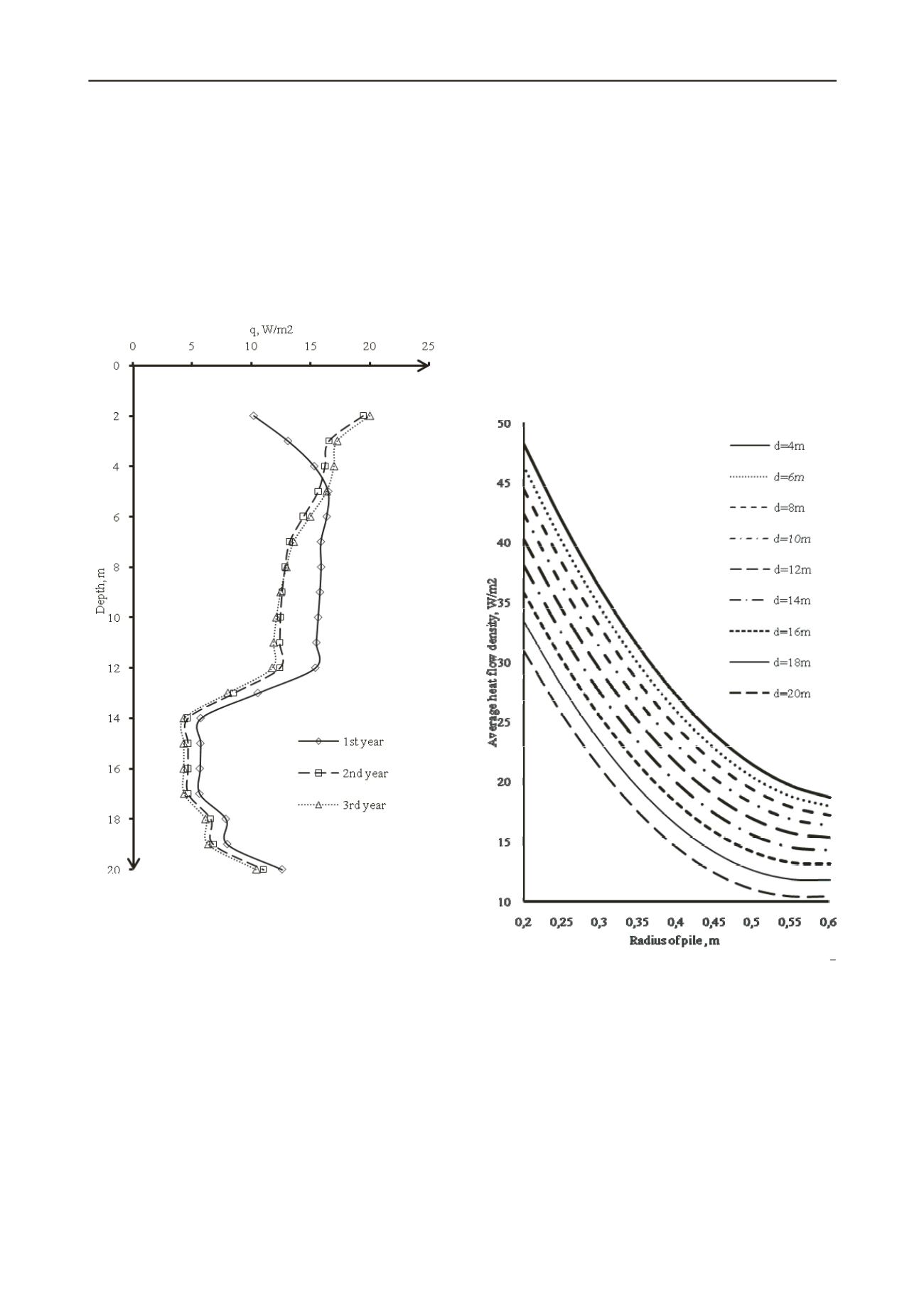
3401
Technical Committee 307 + 212 /
Comité technique 307 + 212
The boundary conditions for the surface of the construction
situated below the soil freezing level as a time-constant
temperature +1°C were additionally set. Thus, a maximal
extraction of thermal energy through the surface of ground-
structure contact was simulated.
To determine the minimal time parameters for the numerical
simulations of various types of foundations, calculations were
carried out and values of the heat flow density through the
contact surface of the ground with the foundations were
obtained for several calendar years. Figure 2 shows the values
of the average heat flow density for the heating period.
Figure 2. Diagram of average heat flow density through the contact
surface of the soil with a 20 m long pile during the heating period
The minimal time parameters for the numerical simulation of
different energy foundations maintenance were determined on
the solution of the test problems. They are the following: 3
years for a single energy pile, 7 years for a slab foundation and
5 years for a slurry wall.
The purpose of the numerical simulation was quantitative
evaluation of the thermal energy extracted from different energy
foundations under soil conditions in the city of Perm. Thereto,
main types of ground bases typical for the city of Perm were
ascertained and numerical experiments were carried out. Based
on them regression equations were obtained.
According to the studies done (Kaloshina S.V. et al. 2006),
engineering-geological conditions in Perm can generally be
reduced to two types. The first one is represented by low
plasticity loam and gravel ground with sandy filling aggregate.
The second type is medium sand, under which gravel ground
with sandy filling aggregate lies. Low-compressible Upper
Permian semi- rock occurs below gravel ground.
The experimental site refers to the ground base of the first
type. When carrying out the numerical experiment, dependences
on various factors of average heat flow density through the
contact surface of the deep building parts with the ground were
determined.
As two main types of ground conditions with concrete values
of physical and thermal-physical characteristics of the ground
were identified, their impact on energy foundations was taken
into account through numerical calculations and obtaining the
dependences for each type.
Therefore, geometrics parameters and underground structure
depth were chosen as the main factors, namely:
- for a single pile: a pile radius (
r
) and pile tip depth (
d
);
- for a sunk slab foundation: foundation width (
b
) and
foundation depth (
d
);
- for a slurry wall: foundation depth (
d
).
The following regression dependences based on numerical
simulation results were obtained and nomograms were plotted.
An example of a nomogram is shown in Fig. 3.
Figure 3. Nomogram of dependence of the heat flow density (
q
)
through the pile-ground contact surface on the radius (
r
) and the pile
point depth (
d
). Engineering-geological conditions of the first type.
Example of distribution of temperature fields in the soil mass
at work energy pile is shown in fig. 4.


